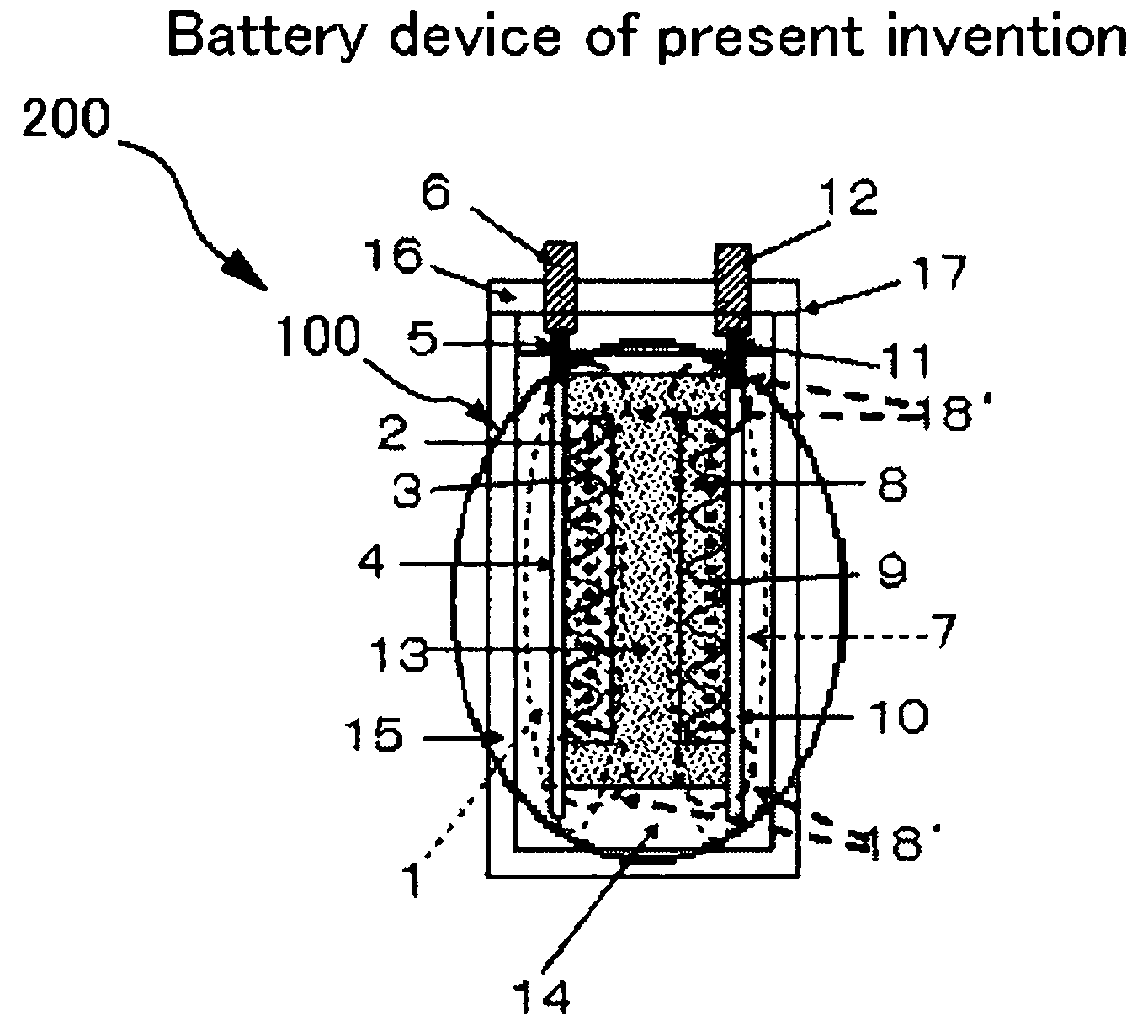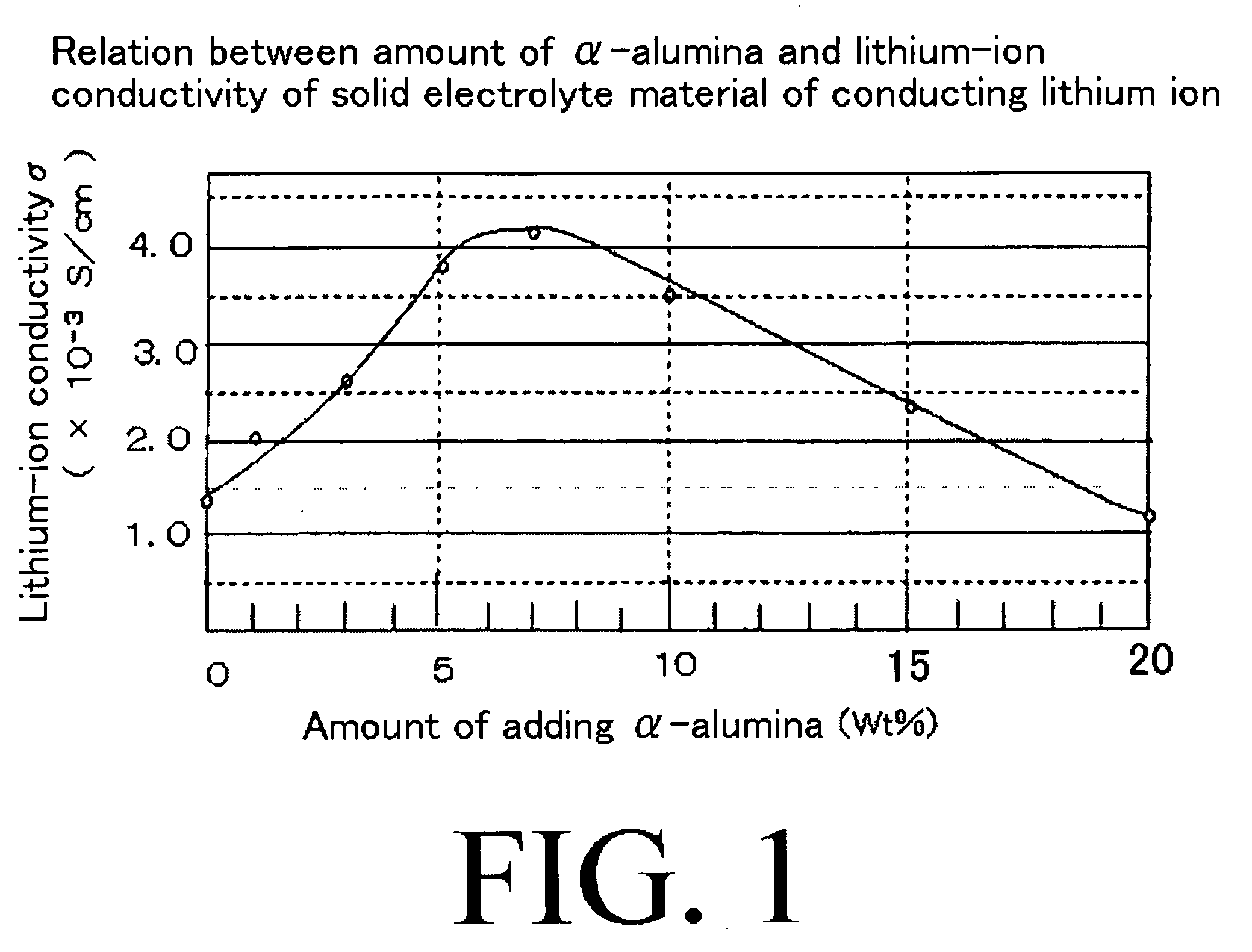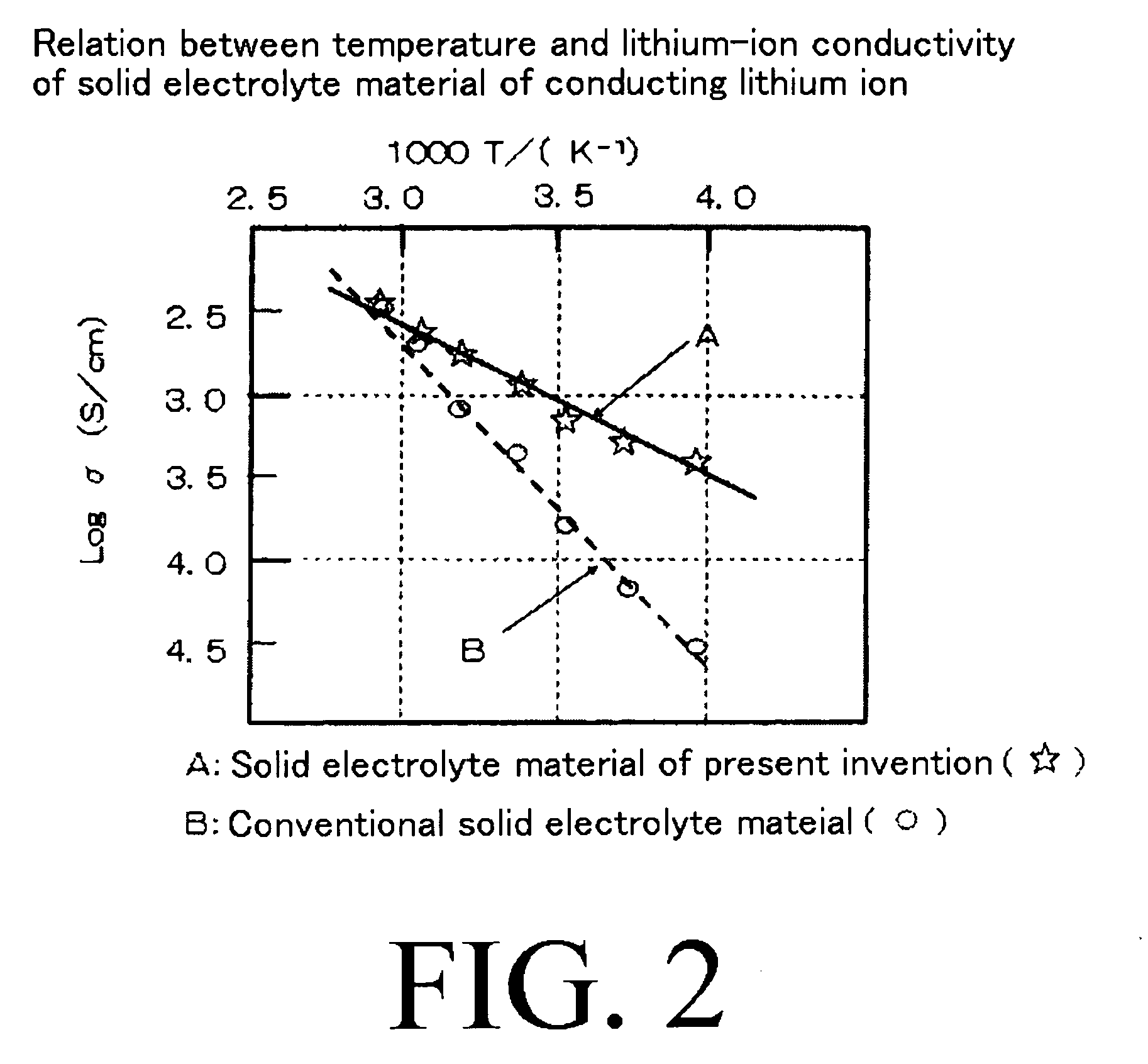Solid electrolyte material of conducting lithium ion, battery device using the solid electrolyte material and all-solid lithium secondary battery provided with the battery device
a lithium ion and solid electrolyte technology, applied in the direction of non-metal conductors, electrochemical generators, non-aqueous electrolyte cells, etc., can solve the problem of increasing the danger of battery firing, the inability of a battery element to retain an active material of the electrode, and the inability to discharge the battery. the effect of superior charge-discharge characteristics
- Summary
- Abstract
- Description
- Claims
- Application Information
AI Technical Summary
Benefits of technology
Problems solved by technology
Method used
Image
Examples
example 1
[0071]First, a lithium-ion conducting glass constituted of Li2S—SiS2—Li3PO4 was used as a sulfide-based lithium-ion conductor which was a starting material of a solid electrolyte material. Further, α-alumina was used as insulating fine particles. Then, the solid electrolyte materials were produced by mixing the lithium-ion conducting glass and the α-alumina at various ratios by weight according to the method described above. Then, in each of the solid electrolyte materials, lithium-ion conductivity was measured by using a predetermined method. The results are shown in FIG. 1.
[0072]FIG. 1 is a graph which shows a relation between an added amount of α-alumina and lithium-ion conductivity of the produced solid electrolyte material. In this regard, it is to be noted that all values of the lithium-ion conductivity shown in FIG. 1 are measured values at room temperature.
[0073]As shown in FIG. 1, in the solid electrolyte using the solid electrolyte material in which α-alumina of about 15 w...
example 2
[0084]First, a crystalline material of conducting a lithium ion, which is constituted of Li2S—Ge2S2—P2S5, was used as a sulfide-based lithium-ion conductor which was a starting material of a solid electrolyte material. Further, α-alumina was used as insulating fine particles. Then, the solid electrolyte material was produced by mixing the crystalline material and α-alumina of 5% at a ratio by weight to the crystalline material according to the method described above.
[0085]Then, lithium-ion conductivities of the produced solid electrolyte material and the starting material were measured by using a predetermined method. As a result, lithium-ion conductivity of the produced solid electrolyte material was 4.3×10−3 S / cm. On the other hand, lithium-ion conductivity of the starting material was 2.5×10−3 S / cm. The lithium-ion conductivity of the produced solid electrolyte material was much higher than the lithium-ion conductivity of the starting material.
example 3
[0086]First, a lithium-ion conducting glass constituted of Li2S—P2S5 was used as a sulfide-based lithium-ion conductor which was a starting material of a solid electrolyte material. Further, α-alumina was used as insulating fine particles. Then, the solid electrolyte material was produced by mixing the lithium-ion conducting glass and α-alumina of 5% at a ratio by weight to the lithium-ion conducting glass according to the method described above.
[0087]Then, lithium-ion conductivities of the produced solid electrolyte material and the starting material were measured by using a predetermined method. As a result, lithium-ion conductivity of the produced solid electrolyte material was 0.75×10−3 S / cm. On the other hand, lithium-ion conductivity of the starting material was 0.25×10−3 S / cm. The lithium-ion conductivity of the produced solid electrolyte material was much higher than the lithium-ion conductivity of the starting material.
PUM
 Login to View More
Login to View More Abstract
Description
Claims
Application Information
 Login to View More
Login to View More - R&D
- Intellectual Property
- Life Sciences
- Materials
- Tech Scout
- Unparalleled Data Quality
- Higher Quality Content
- 60% Fewer Hallucinations
Browse by: Latest US Patents, China's latest patents, Technical Efficacy Thesaurus, Application Domain, Technology Topic, Popular Technical Reports.
© 2025 PatSnap. All rights reserved.Legal|Privacy policy|Modern Slavery Act Transparency Statement|Sitemap|About US| Contact US: help@patsnap.com



